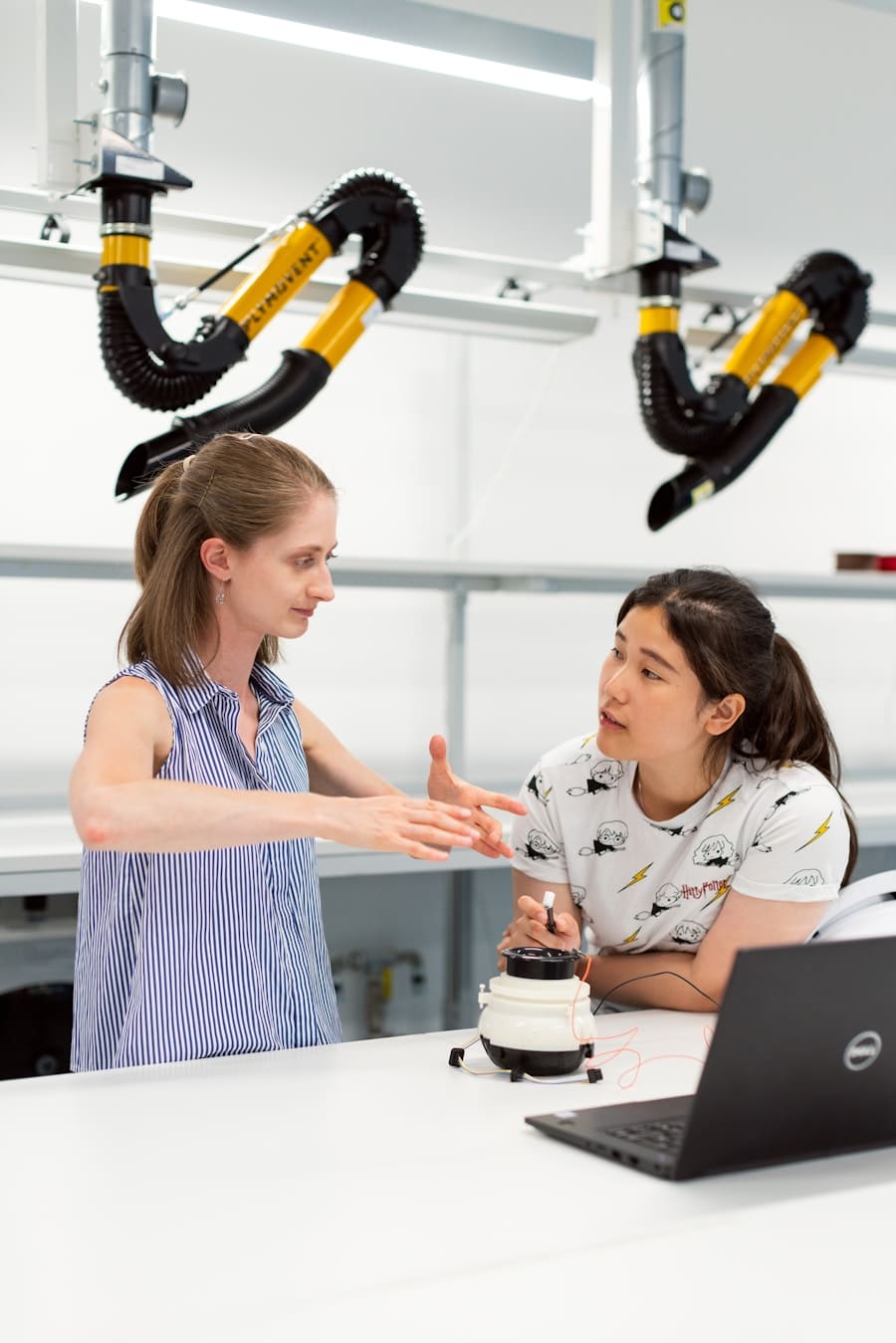Collaborative robots, often referred to as cobots, represent a significant evolution in the field of robotics, designed specifically to work alongside human operators in a shared workspace. Unlike traditional industrial robots that operate in isolation, cobots are engineered to interact safely and efficiently with humans, enhancing productivity while minimizing risks. The advent of collaborative robots has been driven by advancements in artificial intelligence, machine learning, and sensor technology, allowing these machines to perceive their environment and adapt their actions accordingly.
This paradigm shift in automation is not merely about replacing human labor; rather, it emphasizes augmenting human capabilities and fostering a synergistic relationship between humans and machines. The rise of collaborative robots can be attributed to the increasing demand for flexibility in manufacturing processes. As industries face the pressures of rapid product changes and customization, cobots offer a solution that traditional automation cannot match.
They can be easily programmed and reconfigured for various tasks, making them ideal for small to medium-sized enterprises that require adaptability without the high costs associated with conventional robotic systems. This flexibility is further enhanced by user-friendly interfaces that allow operators with minimal technical expertise to deploy and manage these robots effectively. As a result, collaborative robots are becoming integral to modern manufacturing, logistics, healthcare, and many other sectors.
Key Takeaways
- Collaborative robots, or cobots, are designed to work alongside humans in a shared workspace, performing tasks that require human-like dexterity and flexibility.
- Human-robot teamwork can lead to increased productivity, improved quality, and reduced ergonomic strain on human workers.
- Safety measures for collaborative robots include risk assessments, safety-rated software and hardware, and the use of sensors and vision systems to detect and avoid collisions with humans.
- Challenges in implementing human-robot teamwork include the need for specialized training, the potential for job displacement, and the difficulty of integrating robots into existing workflows.
- Training and integration of collaborative robots involve teaching the robot specific tasks, programming it to work safely with humans, and integrating it into the production process.
- Examples of successful human-robot teamwork include collaborative assembly lines, medical and surgical assistance, and warehouse automation.
- Future developments in collaborative robots may include advancements in artificial intelligence, increased autonomy, and the ability to adapt to changing environments.
- Ethical considerations in human-robot teamwork include issues of job displacement, privacy concerns, and the potential for robots to outperform humans in certain tasks.
Benefits of Human-Robot Teamwork
The integration of collaborative robots into the workforce brings forth numerous benefits that extend beyond mere efficiency gains. One of the most significant advantages is the enhancement of productivity. Cobots can perform repetitive tasks with precision and speed, allowing human workers to focus on more complex and creative aspects of their jobs.
For instance, in an assembly line setting, a cobot can handle the monotonous task of screwing components together while a human worker oversees quality control and problem-solving. This division of labor not only increases output but also improves job satisfaction among employees who can engage in more fulfilling work. Moreover, human-robot teamwork fosters a safer working environment.
Collaborative robots are equipped with advanced sensors and safety features that enable them to detect human presence and adjust their operations accordingly. This capability significantly reduces the risk of accidents that can occur when humans and machines operate in close proximity. For example, in a warehouse setting, a cobot can assist with lifting heavy items while ensuring that it does not collide with human workers navigating the space.
By alleviating the physical strain on employees and minimizing hazardous situations, cobots contribute to overall workplace safety and employee well-being.
Safety Measures for Collaborative Robots
Safety is paramount when integrating collaborative robots into environments where humans are present. To ensure safe interactions, manufacturers have developed a range of safety measures tailored specifically for cobots. One of the primary safety features is the implementation of force-limiting technology.
This technology allows cobots to sense contact with humans or objects and automatically reduce their speed or stop entirely to prevent injury. For instance, if a worker inadvertently places their hand in the path of a moving cobot arm, the robot will immediately halt its motion, thereby avoiding potential harm. In addition to force-limiting technology, collaborative robots often incorporate vision systems and proximity sensors that enhance their awareness of the surrounding environment.
These systems enable cobots to navigate complex spaces while avoiding obstacles and recognizing human operators. Furthermore, many cobots are designed with soft edges and rounded shapes to minimize injury risk during accidental contact. Regular safety audits and adherence to industry standards, such as ISO 10218 and ISO/TS 15066, further ensure that collaborative robots meet stringent safety requirements before deployment in workplaces.
Challenges in Implementing Human-Robot Teamwork
Despite the numerous advantages of collaborative robots, several challenges must be addressed for successful implementation in various industries. One significant hurdle is the initial investment required for integrating cobots into existing workflows. While cobots are generally more cost-effective than traditional industrial robots, the upfront costs associated with purchasing, programming, and training personnel can still be substantial for small businesses.
Additionally, organizations may face resistance from employees who fear job displacement or are skeptical about working alongside robots. Another challenge lies in the technical complexities involved in programming and maintaining collaborative robots. Although many cobots come with user-friendly interfaces, there is still a learning curve associated with their operation.
Companies must invest time and resources into training employees to effectively collaborate with these machines. Furthermore, as technology continues to evolve rapidly, organizations must stay abreast of updates and advancements in robotic capabilities to ensure they are utilizing their cobots to their fullest potential.
Training and Integration of Collaborative Robots
The successful integration of collaborative robots into a workforce hinges on comprehensive training programs that equip employees with the necessary skills to work alongside these machines effectively. Training should encompass not only the technical aspects of operating cobots but also an understanding of their capabilities and limitations. For instance, employees should be educated on how to program simple tasks or troubleshoot common issues that may arise during operation.
This knowledge empowers workers to take ownership of their interactions with cobots, fostering a sense of collaboration rather than competition. Moreover, organizations must consider the cultural shift that comes with introducing collaborative robots into the workplace. Employees may initially view cobots as threats to their job security; therefore, it is crucial to communicate the benefits of human-robot teamwork clearly.
Highlighting success stories where cobots have enhanced productivity without displacing workers can help alleviate fears and encourage acceptance among staff. Additionally, involving employees in the decision-making process regarding robot selection and deployment can foster a sense of ownership and collaboration.
Examples of Successful Human-Robot Teamwork
Numerous industries have successfully implemented collaborative robots to enhance productivity and improve workplace dynamics. In manufacturing, companies like BMW have integrated cobots into their assembly lines to assist workers with tasks such as lifting heavy components or performing repetitive actions like screwing bolts. These robots work alongside human operators, allowing them to focus on quality control and complex assembly tasks that require human dexterity and judgment.
In healthcare settings, collaborative robots have been employed to assist nurses and caregivers in various capacities.
This not only reduces the physical strain on healthcare workers but also allows them to dedicate more time to patient care.
The successful deployment of these robots demonstrates how human-robot teamwork can lead to improved efficiency while enhancing the quality of service provided.
Future Developments in Collaborative Robots
The future of collaborative robots is poised for significant advancements as technology continues to evolve at an unprecedented pace. One area of development is the integration of artificial intelligence (AI) into cobot systems, enabling them to learn from their interactions with humans and adapt their behavior accordingly. This could lead to more intuitive human-robot collaboration where cobots anticipate the needs of their human counterparts and adjust their actions proactively.
Additionally, advancements in machine learning algorithms will enhance the ability of collaborative robots to perform complex tasks autonomously while still ensuring safety during interactions with humans. As sensor technology improves, cobots will become increasingly adept at navigating dynamic environments filled with obstacles and varying conditions.
Ethical Considerations in Human-Robot Teamwork
As collaborative robots become more prevalent in various sectors, ethical considerations surrounding their use must be addressed comprehensively. One primary concern is the potential impact on employment; while cobots are designed to augment human capabilities rather than replace them, there remains apprehension about job displacement in certain industries. It is essential for organizations to approach this transition thoughtfully by investing in retraining programs that equip workers with new skills relevant to an evolving job market.
Moreover, ethical considerations extend beyond employment issues; they also encompass questions about accountability in decision-making processes involving collaborative robots. As AI-driven systems become more autonomous, determining liability in cases where a robot’s actions lead to accidents or errors becomes increasingly complex. Establishing clear guidelines regarding responsibility and accountability will be crucial as organizations navigate this new landscape of human-robot collaboration.
In conclusion, while collaborative robots offer immense potential for enhancing productivity and safety in various industries, careful consideration must be given to the ethical implications of their integration into the workforce. By addressing these challenges proactively and fostering a culture of collaboration between humans and machines, organizations can harness the full benefits of this technological advancement while ensuring a positive impact on society as a whole.
In a recent article on ENICOMP, they discuss the importance of streamlining schedules with the top 10 best scheduling software for 2023. This article complements the discussion on collaborative robots in human-robot teamwork by highlighting the efficiency and organization that can be achieved through the use of technology. To read more about how scheduling software can enhance productivity and teamwork, check out the article here.
FAQs
What are collaborative robots?
Collaborative robots, also known as cobots, are robots designed to work alongside humans in a shared workspace. They are specifically built to interact with humans in a safe and efficient manner.
What is the role of collaborative robots in human-robot teamwork?
Collaborative robots play a crucial role in human-robot teamwork by assisting humans in various tasks, such as assembly, packaging, and material handling. They can also take on repetitive or dangerous tasks, allowing humans to focus on more complex and strategic activities.
How do collaborative robots ensure safety in human-robot teamwork?
Collaborative robots are equipped with advanced sensors and safety features to detect the presence of humans and avoid collisions. They are designed to operate at lower speeds and forces, minimizing the risk of injury to humans in their vicinity.
What are the benefits of using collaborative robots in human-robot teamwork?
The use of collaborative robots in human-robot teamwork can lead to increased productivity, improved efficiency, and reduced ergonomic strain on human workers. They can also help businesses remain competitive by automating repetitive tasks and freeing up human workers for more value-added activities.
What industries can benefit from the integration of collaborative robots in human-robot teamwork?
Various industries, including manufacturing, logistics, healthcare, and agriculture, can benefit from the integration of collaborative robots in human-robot teamwork. These robots can be used in a wide range of applications, from assembly and pick-and-place tasks to medical assistance and crop harvesting.



